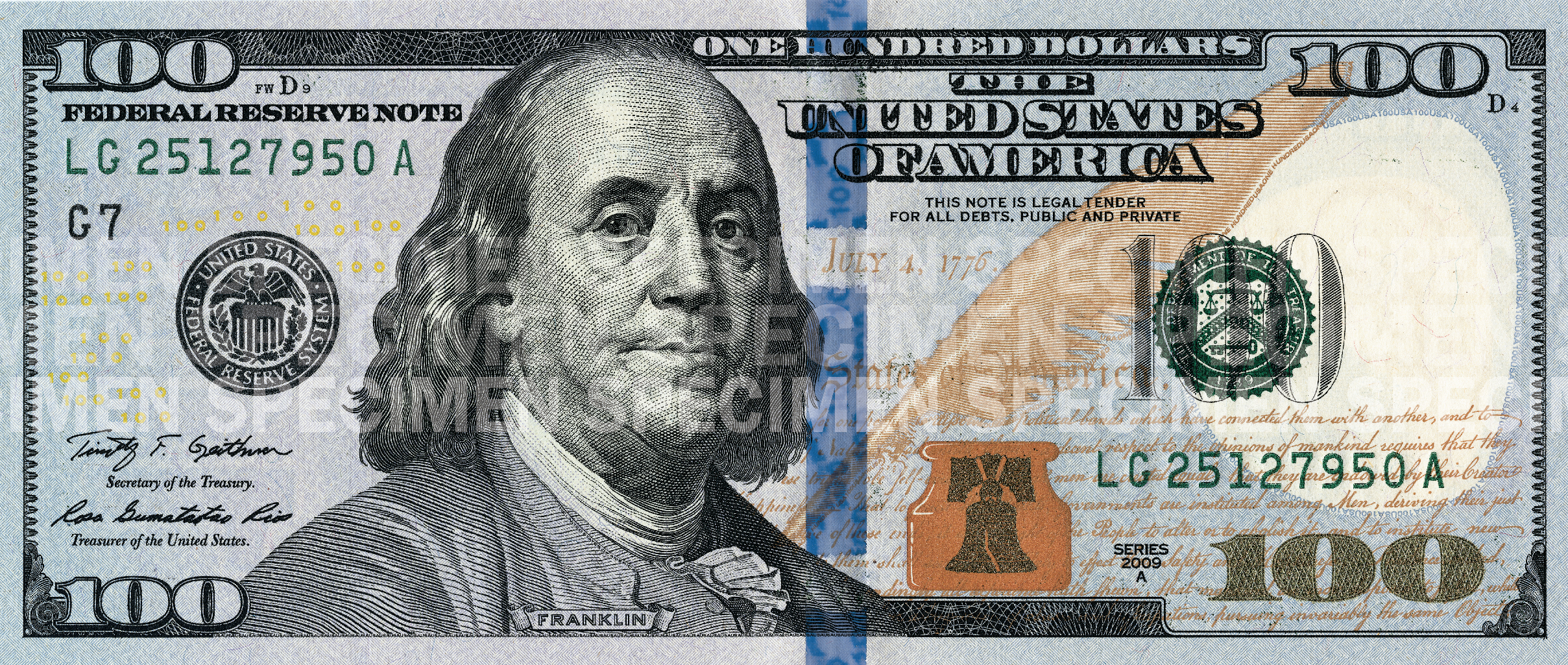Updated Saturday, July 30 at 4:07 p.m.
CULLMAN – The Cullman County Sheriff’s Office on Friday morning at approximately 1 a.m. arrested two individuals in connection with the recent spate of counterfeit money being passed at local businesses.
Chad Wallace and Jordan Parker were arrested in Good Hope after attempting to pass a counterfeit $100 bill at Hardee's. Both men were charged with felony counts of criminal possession of a forged instrument.
"We received a call that someone had passed a counterfeit $100 bill to a local business in the Good Hope/Valley Grove area," said Cullman County Sheriff Matt Gentry. "We passed the vehicle description on to the Cullman Police Department (who has also been investigating recent counterfeit money crimes) and they conducted a traffic stop. Sheriff's department deputies also responded to the traffic stop. Officials were able to identify another business that had received a counterfeit $100 bill. The police officers and deputies arrested Wallace and Parker during the traffic stop."
Gentry says that investigators will be making contact with the United States Secret Service, as that is the protocol when counterfeit money is found.
When asked if Wallace and Parker were simply in possession of the phony bills and did not know they were fake, Gentry replied, "No. They had knowledge that they were counterfeit." Gentry says that citizens who unknowingly pass counterfeit bills are not arrested, that they "have to have knowledge and the intent to defraud someone" for that to happen.
"I would like to commend the hard work of the Cullman County Sheriff's Office deputies, the Cullman City Police Department and the investigators on making these arrests after receiving the call," said Gentry.
According to the CPD, counterfeit money is a continuing problem for local businesses. The two suspects will be questioned by the CPD as well.
“The recent activity in the Cullman area involves the removal of the ink from $10 notes (bills) and then they are reprinted to look like $100 notes,” said CPD Lt. Jody Martin. “The paper is real, but the security thread is still from the $10 note and the watermark is of Hamilton instead of Franklin. We ask that the public not rely on the (counterfeit-detecting) marker pens alone, since they can be fooled or may give false indications.”
Martin says that counterfeit notes are received on a regular basis, but they are usually only detected when someone makes a deposit and the bank notifies them.
“At the time it is discovered it is unknown who passed the note at the business. Sometimes an employee at a business will catch one being passed before the suspect leaves and may even refuse to accept the note as payment,” said Martin. “In a lot of these cases the person/suspect may have received the note as change from another store and did not realize that it was counterfeit. Most notes that we see are $20 bills and $100 dollar bills, although we have on rare occasions seen smaller denominations.”
Martin says the CPD encourages local businesses to be more diligent about checking the security features on notes.
An outstanding resource for learning the security features of all U.S. currency is https://uscurrency.gov/. There, citizens and businesses can download free training materials and take free online training tutorials.
Tips from uscurrency.gov include:
- Feel the paper: Move your finger across the note. It should feel slightly rough to the touch as a result of the printing process and the unique composition of the paper.
- Tilt the note: Tilt the note to see the ink in the numbers on the lower right corner change color. On the current style of notes, the color should change from copper to green.
- Color-shifting ink appears on denominations $10 and higher.
- The current style $100 note includes two additional security features you can check by tilting the note: a color-shifting Bell in the Inkwell and a 3-D Security Ribbon. The 3-D Security Ribbon contains images of bells and 100s that shift as you tilt the note.
- Check with light: Hold the note to light to check that the watermark and security thread are visible from the front and back of the note.
- The security thread is in a different location on each denomination $5 and higher.
- The watermarks on the $10, $20, $50, and $100 notes should match the portrait on the front of the note. The $5 note has numeral 5 watermarks.
The CPD asks that businesses attempt to keep the counterfeit notes instead of returning them to the person that passed them.
“If a business believes they have a counterfeit note they can contact their local law enforcement agency and ask for them to have someone respond and help them determine if the note is fake or legit,” said Martin. “If the person that passed the note is innocent, they will probably stay until the police arrive and provide a statement, but sometimes they may flee. We ask that any employee that does refuse to return the note to the suspect do so safely and not get into any physical confrontation; it is not worth being injured.”
Copyright 2016 Humble Roots, LLC. All rights reserved.





















